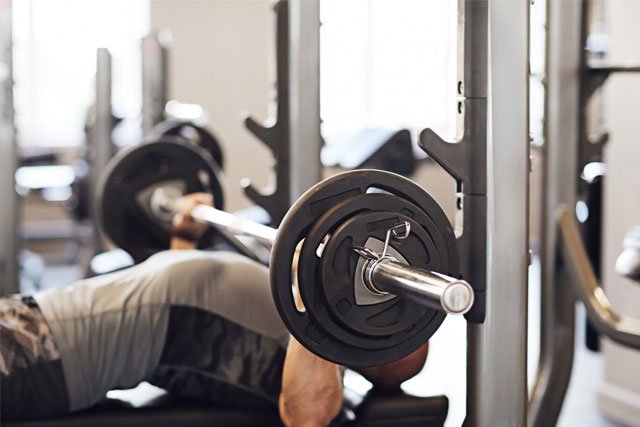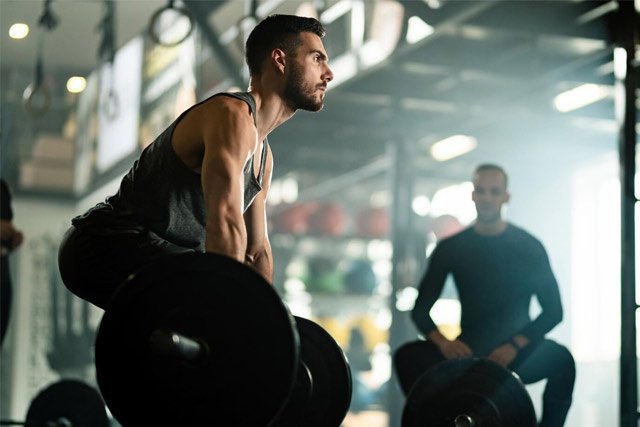Have you ever bent down to clean up after your furry friend or lifted a heavy package off the ground? Congratulations! You’ve performed a deadlift. Often overlooked and underestimated, deadlifts are a powerhouse exercise that engages multiple muscle groups and offers a myriad of benefits. In this extensive guide, we’ll delve into the world of deadlifts, exploring the muscles they work, the incredible benefits they offer, and various types of deadlifts to incorporate into your exercise routine.
1- Why Deadlift? Unveiling the Benefits

Why should you include various types of deadlifts in your workout routine? The answer lies in injury prevention and overall strength gains. According to Alan Shaw, a certified CrossFit Level 2 coach, the ability to deadlift properly can significantly reduce the risk of muscle strains or back injuries, especially as you age. Beyond injury prevention, deadlifts are a game-changer for building strength across your entire body.
1.1. Benefits of Deadlifts: A Holistic Approach to Fitness
- Injury Prevention: Mastering the deadlift significantly reduces the risk of muscle strains and back injuries, contributing to long-term joint health.
- Strength Gains: Deadlifts are unparalleled in promoting overall strength, making them a cornerstone for any well-rounded fitness regimen.
- Postural Correction: Engaging multiple muscle groups, deadlifts help correct imbalances between the posterior and anterior chains, essential for maintaining proper posture.
2- Muscles Activated During Deadlifts

The deadlift is a true full-body movement, engaging a wide range of muscles. Alena Luciani, a strength and conditioning specialist, highlights the muscles worked during various types of deadlifts:
- Hamstrings: Back of the thighs
- Glutes: Buttocks muscles
- Calves: Lower leg muscles
- Latissimus Dorsi (Lats): Large back muscles from armpit to hip
- Core: Deep abdominal muscles
- Erector Spinae: Muscles along the spine
2.1. The Desk Job Dilemma: Why Deadlifts Matter
Especially beneficial for individuals with desk jobs, deadlifts address the imbalance between the posterior and anterior chains, reducing the risk of injury in daily activities and sports.
3- Exploring Different Types of Deadlifts

3.1. Conventional Barbell Deadlift
3.1.1. Mastering the Basics for Strength and Safety
The classic deadlift forms the foundation of deadlifting. Ensure proper form to avoid injury. For an added challenge, try the deficit deadlift by standing on a platform, increasing the range of motion and engaging more muscles.
3.1.2. Form Tips
- Stand with feet hip-width apart, barbell against shins.
- Hinge at hips, keeping a flat back, and grip the bar with palms facing shins.
- Squeeze glutes and lift the bar along the front of legs until standing upright.
- Lower the bar with a flat back to return to the starting position.
3.2. Conventional Dumbbell Deadlift
3.2.1. Balancing Act: A Symphony for Muscular Harmony
A variation using dumbbells that allows for a greater range of motion and addresses muscular imbalances.
3.2.2. Form Tips
- Stand with feet hip-width apart, holding a dumbbell in each hand.
- Engage the core and slide both dumbbells down the front of legs simultaneously.
- Press into feet to return to standing, squeezing glutes at the top.
3.3. Single-Leg Romanian Deadlift (RDL)
3.3.1. Unlocking Unilateral Strength: A Guide to Single-Leg Mastery
This is an excellent unilateral exercise to correct muscular imbalances and strengthen the posterior chain.
3.3.2. Form Tips
- Stand with feet stacked under hips, holding a weight in front of hips.
- Shift weight onto one leg, balancing on toes of the other foot.
- Hinge at hips, lowering the weight along the front of the leg.
- Return to standing, squeezing the glute at the top.
3.4. Sumo Deadlift
3.4.1. Wider Stance, Bigger Gains: Amplifying Your Deadlift Potential
Wider stance than the conventional deadlift, targeting glutes, quads, and hip adductors.
3.4.2. Form Tips
- Stand with feet about twice shoulder-width apart, toes pointed outward.
- Bend at knees and hinge at hips to grab the bar with an overhand grip.
- Lift the bar, thrusting hips forward and squeezing glutes.
- Lower the bar, keeping it close to the body without rounding the back.
3.5. Hex Bar Deadlift
3.5.1. Form meets Function: Elevating Your Deadlift Experience
Utilizing a hex bar for better form and reduced pressure on the spine, activating leg muscles.
3.5.2. Form Tips
- Step inside the hex bar with feet hip-width apart.
- Bend at knees and hips to grab the handles with straight arms.
- Straighten legs to stand, maintaining a flat back.
- Hinge at hips and bend knees to carefully lower the bar back to the starting position.
3.6. Romanian Deadlift
3.6.1. Continuous Tension, Maximum Gains: A Deep Dive into Hamstring Activation
Focuses on hamstring activation with continuous tension, making it different from the conventional deadlift.
3.6.2. Form Tips
- Stand with feet hip-width apart, bar pressed against shins.
- Tip torso forward to grab the bar with straight arms, hands shoulder-width apart.
- Lower the weight along the front of legs until a stretch is felt in the hamstrings.
- Squeeze hamstrings and core to return to the starting position.
4- Incorporating Deadlifts Into Your Workout Routine

The number of sets and reps depends on your training experience and fitness goals. Aim for four to six sets of six to eight reps, with at least 90 seconds of rest between sets. Start with a weight that challenges you without compromising form, gradually increasing as you become more comfortable. Remember, proper recovery, including tools like a back massager or compression boots, is crucial for a successful deadlifting routine.
4.1. Tips for an Effective Deadlifting Routine: A Holistic Approach
- Start Low and Slow: If you’re new to deadlifting, begin with a weight that allows you to focus on perfecting your form. Gradually increase the intensity as your strength and confidence grow.
- Listen to Your Body: Pay attention to any discomfort or signs of fatigue. Proper form and injury prevention should always take precedence over lifting heavier weights.
- Mix It Up: Incorporate various deadlift variations to target different muscle groups and prevent workout monotony. This keeps your body challenged and promotes overall strength development.
- Invest in Recovery: Deadlifting can put a strain on your back and muscles. Consider using a back massager or compression boots to aid in faster recovery and reduce post-exercise soreness.
Conclusion:
Whether you’re a novice lifter or an experienced gym-goer, integrating various types of deadlifts into your exercise routine can unlock a new level of strength and overall fitness. Start with proper form, gradually increase the intensity, and embrace the transformative benefits of deadlifts for a healthier, stronger you! Remember, it’s not just about lifting weights; it’s about sculpting a resilient and functional body that will serve you well in every aspect of life.
Frequently Asked Questions (FAQs):
Can anyone do deadlifts, or is it for advanced lifters only?
Deadlifts can be adapted for individuals of all fitness levels. Beginners should start with lighter weights and focus on perfecting their form before progressing to heavier loads.
How often should I incorporate deadlifts into my workout routine?
The frequency of deadlifts depends on your fitness goals and overall workout plan. As a general guideline, incorporating deadlifts once or twice a week can yield significant benefits without overtraining.
Are there any alternatives to traditional deadlifts for individuals with specific health concerns?
Yes, individuals with health concerns or mobility issues can explore alternative deadlift variations or consult with a fitness professional to tailor the exercise to their specific needs.
Can deadlifts help with weight loss?
While deadlifts primarily focus on strength and muscle development, incorporating them into a well-rounded fitness routine can contribute to overall weight management. The increased muscle mass can boost metabolism and support weight loss efforts.


